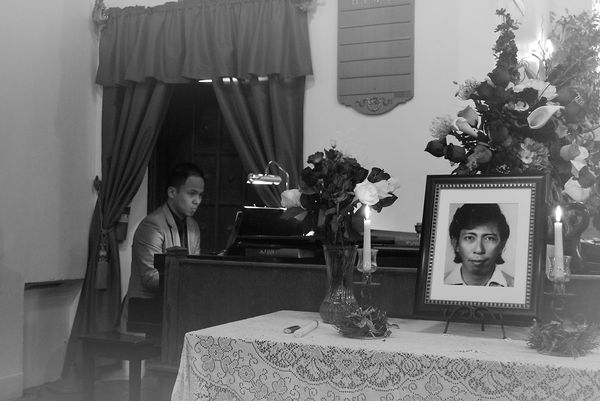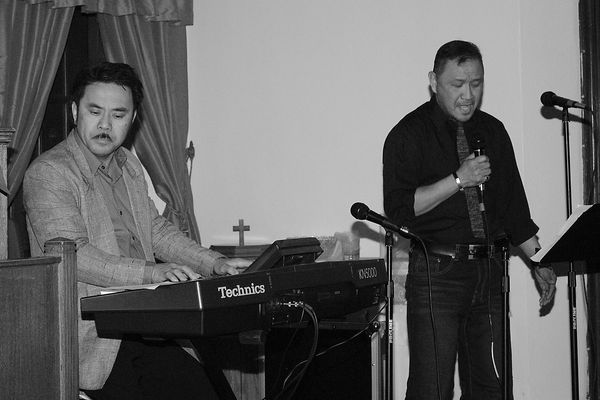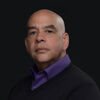AF-S 35mm 1.8
Feb 8, 2012 09:24:15 #
I shoot RAW most of the time, but when shooting in our church I sometimes get lazy and flip the swith to no flash auto. The ISO the camera(D3000) chooses ranges from 1050 to 1600.
My question is would the increase of light at 1.8 (over 3.5-4.5) make enough of a difference to bring my ISO back down to the 800 range?
My question is would the increase of light at 1.8 (over 3.5-4.5) make enough of a difference to bring my ISO back down to the 800 range?
Feb 8, 2012 09:31:41 #
Yes it can, but you will lose depth of field. If you shoot RAW and you have a camera with a high resolution then you should be able to shoot at the higher ISO without difficulty if you are not creating very large prints. The best thing to do is experiment for the building. Go to church and set the lighting like it is in your services (empty of course) and put a subject with well defined edges in the area where you usually have a subject. Then go to where you shoot. Experiment with different ISOs, flash and white balance. Since you are shooting in that setting you may not need as fast a shutter speed and could use a tripod with a cable release. Make notes as you take the photos to remind yourself of the settings (although your camera should record that data in RAW mode) so that when you look at the converted images and compare the sharpness of your subject you know what you did to get the picture.
Like I said at the beginning, the main item you will deal with when making that change is the depth of field.
Like I said at the beginning, the main item you will deal with when making that change is the depth of field.
Feb 8, 2012 09:41:02 #
fcrawley wrote:
Yes it can, but you will lose depth of field. If y... (show quote)
I don't mind the shallow DOF, many of the shots that I take there would benifit from it.
Taken on no flash auto ISO 1600

Taken with flash

Feb 9, 2012 08:18:51 #
hlmichel wrote:
I shoot RAW most of the time, but when shooting in our church I sometimes get lazy and flip the swith to no flash auto. The ISO the camera(D3000) chooses ranges from 1050 to 1600.
My question is would the increase of light at 1.8 (over 3.5-4.5) make enough of a difference to bring my ISO back down to the 800 range?
My question is would the increase of light at 1.8 (over 3.5-4.5) make enough of a difference to bring my ISO back down to the 800 range?
Well, 1.8 is two f-stops faster than 3.5 so that would bring an ISO of 1600 down to 400 and 1050 down to 250.
Feb 9, 2012 08:36:36 #
Patw28 wrote:
Well, 1.8 is two f-stops faster than 3.5 so that would bring an ISO of 1600 down to 400 and 1050 down to 250.
hlmichel wrote:
I shoot RAW most of the time, but when shooting in our church I sometimes get lazy and flip the swith to no flash auto. The ISO the camera(D3000) chooses ranges from 1050 to 1600.
My question is would the increase of light at 1.8 (over 3.5-4.5) make enough of a difference to bring my ISO back down to the 800 range?
My question is would the increase of light at 1.8 (over 3.5-4.5) make enough of a difference to bring my ISO back down to the 800 range?
Well, 1.8 is two f-stops faster than 3.5 so that would bring an ISO of 1600 down to 400 and 1050 down to 250.
That's exactly what I was looking for--I just do not understand the math of photography.
Thank you
Feb 9, 2012 08:47:54 #
Wabbit
Loc: Arizona Desert
hlmichel wrote:
I shoot RAW most of the time, but when shooting in our church I sometimes get lazy and flip the swith to no flash auto. The ISO the camera(D3000) chooses ranges from 1050 to 1600.
My question is would the increase of light at 1.8 (over 3.5-4.5) make enough of a difference to bring my ISO back down to the 800 range?
My question is would the increase of light at 1.8 (over 3.5-4.5) make enough of a difference to bring my ISO back down to the 800 range?
For every full stop you open the aperture the iso needs to be dropped by one full speed to equal the previous exposure. What changes is your depth of field and / or shutter speed.
When you drop yout iso down you need more time for light to enter. This happens two ways, by the size of the lens opening and how long the shutter stays open.
Feb 9, 2012 09:08:24 #
Wabbit
Loc: Arizona Desert
hlmichel wrote:
quote=Patw28 quote=hlmichel I shoot RAW most of ... (show quote)
The math with digital is a little more complicated because we have fractions of as options, not full stops like is shown with manual film cameras.
One full film sensivity after iso100 is iso200. One Full jump in iso increase is iso400, the next Full jump in sensivity increase is iso800, the next Full increase is iso1600. One full jump in sensivity doubles your previous one. What's confusing is your digital camera shows fractional amounts. The numbers above are "Full sensivity increases".
There is the same confusion with shutter speeds because we have fractional increases there too. If you start at 2.8 the next full aperture increase is f4. then comes f5.6, then f8, then f16
The confusing fractional numbers between the numbers I listed above for aperture and shutter speeds coinside with each other for an acceptable exposure.
Digital allows us to use more combinations than those in the film days.
Hope this helps you
Feb 9, 2012 10:04:44 #
Feb 9, 2012 11:13:08 #
I'm a bit confused. If the 1.8 lens allows the ISO to come down, how does that affect dof, since aperture would remain the same?
Feb 9, 2012 12:50:31 #
Wabbit
Loc: Arizona Desert
SteveR wrote:
I'm a bit confused. If the 1.8 lens allows the ISO to come down, how does that affect dof, since aperture would remain the same?
Lets forget about changing the iso for a minute, but we're going to set it at iso 100.
Your 35mm f1.8 lens wide open is f1.8.
The second setting is going to be your shutter speed.
The aperture of f1.8 needs to work in conjunction with the shutter speed to get an acceptable exposure. I say acceptable because there is not such thing a perfect exposure. Exposure is always subjective.
Lets say for example that 1/250th of a second is what you're going to use. This combination is acceptable (f1.8 at 1/250th) for the exposure.
But the scene involves a moving automobile and you know that you want to try to stop motion. You may not be able to do do that at 1/250 but you know that at 1/500 you have a better chance. One full step up from 1/250 is 1/500.
Now you can double your iso to 200 ... at f1.8 with 1/500 shutter will give you the same acceptable exposure but with a faster shutter speed while maintaining the same depth of field at 1.8.
If 1/500 is still too slow you can double your iso to 800 and at f1.8 you'll be able to use a 1/1,000 shutter speed.
If you want to double your shutter speed you can if you double your iso, the depth of field stays the same because we didn't change the aperture.
Hope this helps you.
Feb 9, 2012 18:30:48 #
That's what I thought. fcrawley indicated that bringing the iso down with a faster lens would change the dof. I didn't think so.
Feb 9, 2012 18:45:54 #
Lol, this is starting to sound complicated.
If I get lucky, I may be able to pick the lens up semi-locally; I will have to drive 30 miles or so. Beats waiting for UPS.
Noticed that Nikon has them in stock again--both new and referbs. They are offering free shipping as well(UPS ground only)
I guess when I get the lens, I'll just have to spend a little time in apperature priority mode before going back to manual. My ultimate hope is that this lens will keep me out of 'no flash auto'.
Going to try to pick one up this Friday. Going to a party on Saturday so I should have something to show by Monday.
If I get lucky, I may be able to pick the lens up semi-locally; I will have to drive 30 miles or so. Beats waiting for UPS.
Noticed that Nikon has them in stock again--both new and referbs. They are offering free shipping as well(UPS ground only)
I guess when I get the lens, I'll just have to spend a little time in apperature priority mode before going back to manual. My ultimate hope is that this lens will keep me out of 'no flash auto'.
Going to try to pick one up this Friday. Going to a party on Saturday so I should have something to show by Monday.
Feb 9, 2012 19:01:53 #
himichel...Are you looking at a 35mm or 55mm? My 55mm is too tight (since it's practically a 82mm lens) to get the whole dining room table in. Make sure that 55mm will get the full field that you want to shoot.
Feb 9, 2012 19:29:40 #
SteveR wrote:
himichel...Are you looking at a 35mm or 55mm? My 55mm is too tight (since it's practically a 82mm lens) to get the whole dining room table in. Make sure that 55mm will get the full field that you want to shoot.
No, I am talking 35mm.
Feb 9, 2012 19:37:52 #
hlmichel wrote:
No, I am talking 35mm.
SteveR wrote:
himichel...Are you looking at a 35mm or 55mm? My 55mm is too tight (since it's practically a 82mm lens) to get the whole dining room table in. Make sure that 55mm will get the full field that you want to shoot.
No, I am talking 35mm.
Nice lens at a nice price.
If you want to reply, then register here. Registration is free and your account is created instantly, so you can post right away.


